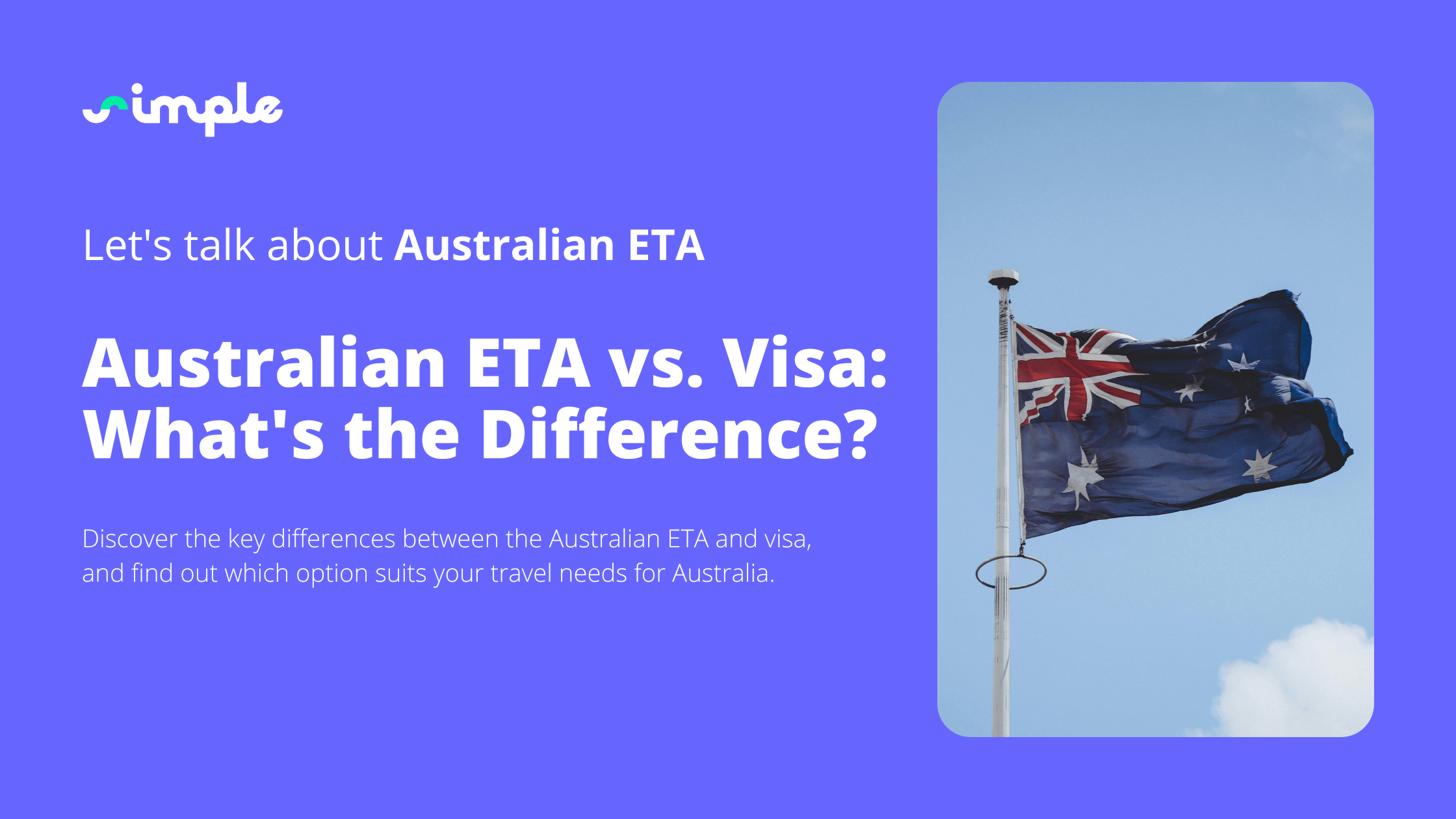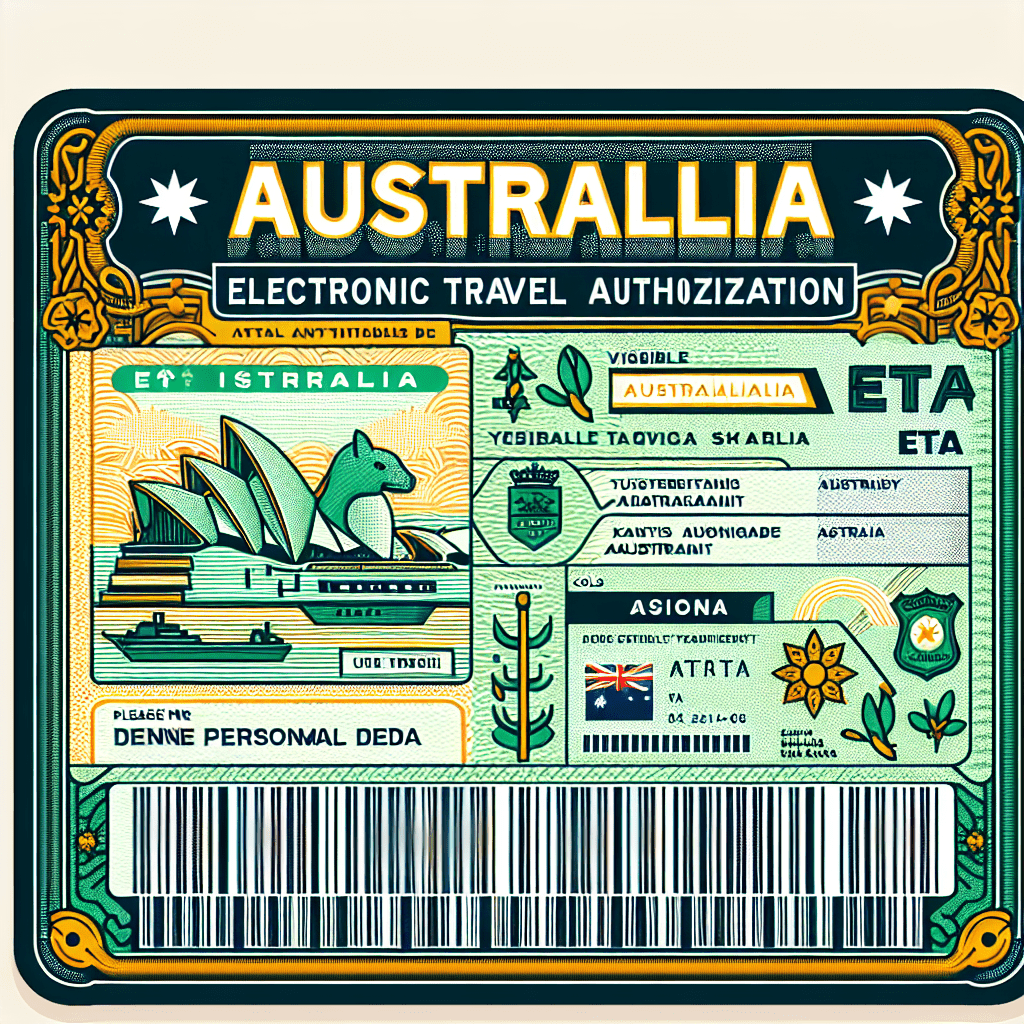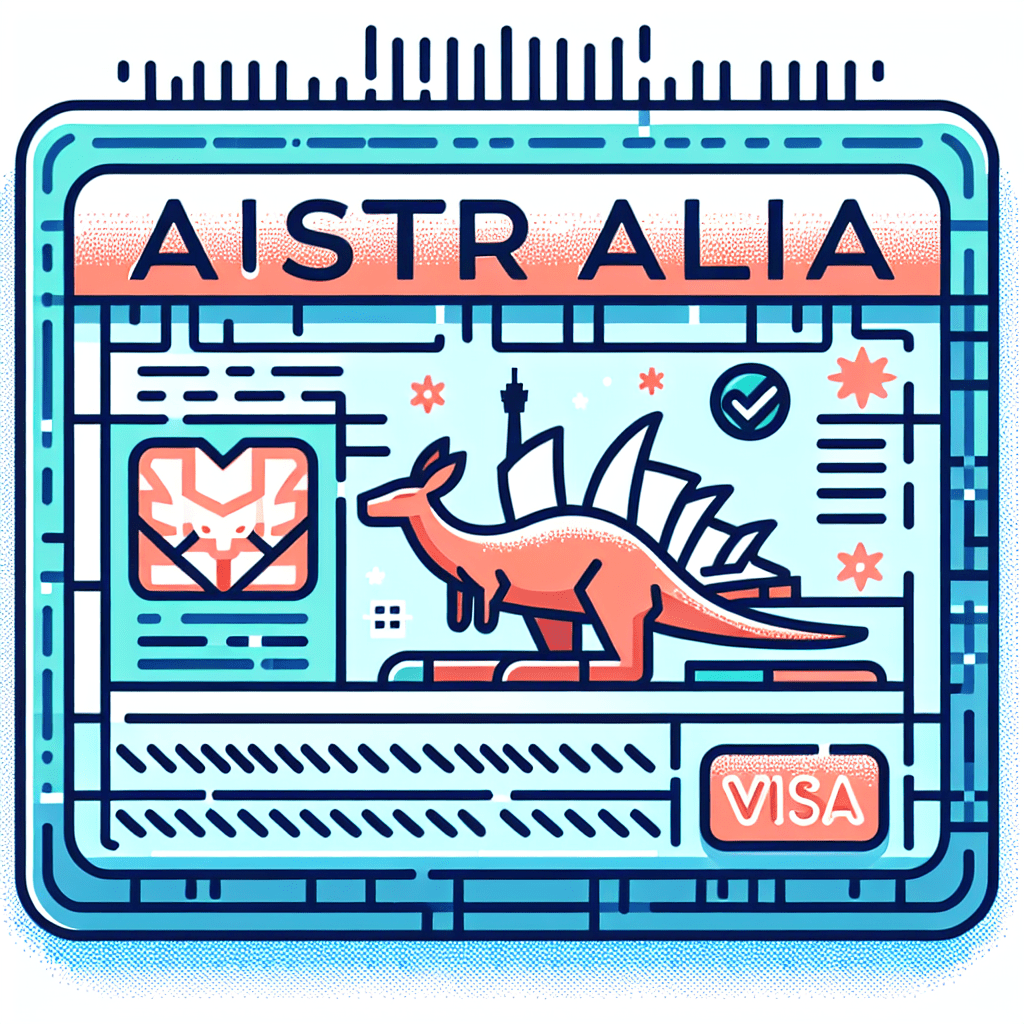Australian ETA vs. Visa: What’s the Difference?

Traveling to Australia requires careful attention to entry requirements, as the country enforces strict regulations to ensure the safety and security of its borders. Understanding the distinctions between the Australian ETA and a traditional visa is essential for anyone planning a visit, whether for tourism, business, or transit. These travel authorizations serve different purposes and come with varying application processes, eligibility criteria, and validity periods. Making the right choice can save time, reduce costs, and prevent complications during your journey.
The Australian ETA, or Electronic Travel Authority, is a streamlined electronic travel permit designed for short-term visits. It allows eligible travelers to enter Australia without the need for a lengthy visa application process. This electronic travel permit is particularly popular among tourists and business visitors from certain countries, offering a convenient and fast way to obtain travel authorization online. In contrast, a traditional Australian visa often involves a more detailed application, additional documentation, and longer processing times. These visas cover a broader range of purposes, including work, study, and extended stays.
Knowing the difference between the Australian ETA and other visa types is crucial for selecting the correct travel authorization. Factors such as the length of stay, nationality, and purpose of visit influence which option is appropriate. For example, the Australian ETA is typically valid for up to three months per visit and is available to citizens of specific countries, while other visas may allow longer stays or multiple entries. Additionally, the cost and processing time can vary significantly between the two, making it important to understand these distinctions before applying.
For travelers seeking a quick and efficient way to visit Australia, the Australian ETA offers a practical solution. More detailed visa options exist for those with specialized needs or longer-term plans. To learn more about the Australian ETA and how it compares to other visa options, visit Australian ETA for comprehensive guidance and application assistance. Being well-informed about these travel authorizations ensures a smoother entry process and a more enjoyable experience in Australia.

Definition and Purpose of Australian ETA
What is an ETA?
The Electronic Travel Authority (ETA) is a digital authorization that grants eligible travelers permission to enter Australia for short-term visits. Unlike traditional visas that often require physical documentation or lengthy processing, the ETA functions as an electronic travel permit linked directly to the traveler’s passport. This seamless connection allows border officials to verify entry permissions quickly and efficiently upon arrival.
Primarily designed for tourism and business purposes, the ETA facilitates visits that typically last up to three months. It is not intended for long-term stays, work, or study, but rather for those who plan to explore Australia’s diverse landscapes, attend business meetings, or participate in short conferences. The ETA’s electronic nature eliminates the need for travelers to carry additional paperwork, streamlining the entry process and reducing administrative burdens.
As an Australia electronic visa, the ETA represents a modern approach to travel authorization, reflecting the country’s commitment to leveraging technology for border security and traveler convenience. It is part of a broader system of electronic travel permits that many countries have adopted to enhance immigration control while supporting tourism and international business.
Eligibility and Application Process
Eligibility for the Australian ETA is limited to citizens of specific countries, primarily those with strong diplomatic ties and low immigration risk profiles. These eligible countries include the United States, Canada, Japan, South Korea, and several European nations, among others. Travelers from these countries can apply for an ETA for Australia with relative ease compared to other visa categories.
The application process is straightforward and conducted entirely online, making it accessible from anywhere in the world. Applicants must provide basic personal information, passport details, and travel plans through an official Australia travel visa online portal or authorized service providers. The simplicity of the Australian visa application process is one of the ETA’s key advantages, often resulting in approval within minutes or a few hours.
To qualify, applicants must hold a valid passport from an eligible country and have no history of visa refusals or serious criminal records. The system also checks for any outstanding immigration issues or security concerns. Meeting these ETA Australia requirements ensures that the electronic travel permit is granted only to travelers who pose minimal risk to Australia’s borders.
Because the ETA is electronically linked to the passport, there is no need to print or carry a physical visa label. This reduces the risk of lost documents and simplifies travel preparations. However, applicants should ensure their passport remains valid for the duration of their stay and that all information provided during the application is accurate to avoid delays or refusals.
Limitations and Validity
While the Australian ETA offers convenience and speed, it comes with specific limitations that travelers must understand before applying. The most notable restriction is the duration of stay allowed under the ETA, which is typically up to three months per visit. This makes it ideal for short-term tourism or business trips but unsuitable for extended stays, work assignments, or academic programs.
Additionally, the ETA does not permit holders to engage in paid employment or formal study while in Australia. Travelers intending to work or study must apply for the appropriate visa category that accommodates these activities. Attempting to work or enroll in courses on an ETA can lead to visa cancellation and potential future entry bans.
The ETA can also be canceled or refused under certain conditions. For example, if a traveler’s circumstances change, such as a criminal conviction or a breach of visa conditions, Australian immigration authorities have the right to revoke the electronic travel permit. Similarly, if incorrect or misleading information is provided during the application, the ETA may be denied or invalidated.
Despite these limitations, the Australian ETA remains a highly effective and popular option for eligible travelers seeking a hassle-free entry permit. Its electronic format, quick processing, and targeted eligibility criteria make it a practical choice for millions of visitors each year. Understanding these parameters ensures that travelers select the correct authorization and comply with Australia’s immigration laws.

Overview of Traditional Australian Visas
Variety of Visa Types for Different Purposes
Australia offers a wide range of traditional visas tailored to meet the diverse needs of travelers, workers, students, and those seeking permanent residency. Unlike the streamlined Australian ETA, which is designed primarily for short-term visits, traditional visas encompass multiple categories, each with specific eligibility criteria and intended purposes. These include visitor visas, work visas, student visas, and pathways to permanent residency, among others.
Visitor visas are often used by travelers who do not qualify for the Australian tourist ETA or who plan to stay longer than the typical three-month period allowed under an ETA. These visas can accommodate extended tourism, family visits, or other short-term stays. Work visas, on the other hand, are designed for individuals seeking employment opportunities in Australia, ranging from temporary skilled worker visas to employer-sponsored visas. Student visas enable international students to pursue academic programs at Australian educational institutions, often allowing part-time work during their studies.
Permanent residency options provide a pathway for those wishing to live indefinitely in Australia. These visas often require meeting stringent criteria related to skills, family sponsorship, or humanitarian grounds. Each visa type has its own set of eligibility requirements, which may include age limits, health and character assessments, and proof of financial stability. The variety of visa options reflects Australia’s commitment to managing immigration in a way that supports economic growth, cultural diversity, and social cohesion.
Because of this diversity, applicants must carefully assess which visa category aligns with their travel intentions and personal circumstances. Unlike the Australian ETA, which has relatively uniform eligibility criteria, traditional visas demand a more tailored approach to application and documentation.
Application Complexity and Processing
The application process for traditional Australian visas is generally more complex and time-consuming compared to the ETA for Australia. Applicants are required to submit extensive paperwork, including identity documents, proof of financial means, health examinations, and sometimes character references. This documentation is necessary to satisfy the Australian Department of Home Affairs that the applicant meets all visa requirements.
Unlike the simple online application for an Australia electronic visa like the ETA, traditional visa applications often involve multiple steps and may require physical submission of documents or attendance at visa application centers. Some visa categories also necessitate interviews or additional background checks, especially for work and permanent residency visas. These procedures contribute to longer Australian visa processing times, which can range from several weeks to months depending on the visa type and individual circumstances.
Applicants should be prepared for this extended timeline and ensure that all required documents are accurate and complete to avoid delays or refusals. The complexity of the Australian visa application process underscores the importance of thorough preparation and, in some cases, professional assistance to navigate the requirements effectively.
Flexibility and Benefits
One of the key advantages of traditional Australian visas over the ETA is the greater flexibility and range of benefits they offer. Depending on the visa type, holders may be permitted to work, study, or stay in Australia for extended periods. For example, work visas allow individuals to engage in paid employment, while student visas provide opportunities for full-time study combined with limited work rights. This flexibility is essential for those whose travel plans extend beyond short-term tourism or business visits.
Moreover, many traditional visas serve as pathways to permanent residency and eventual citizenship. This is particularly important for skilled workers, family members of Australian residents, and humanitarian entrants. The ability to transition from a temporary visa to permanent residency offers long-term security and access to social benefits, healthcare, and education within Australia.
Traditional visas also grant more comprehensive travel and residency rights, including multiple entries, longer validity periods, and the possibility to sponsor family members. These features make them suitable for individuals with complex or evolving circumstances who require more than just a simple entry permit.
While the Australia ETA cost and application process are designed for convenience and speed, traditional visas provide a broader scope of opportunities and legal protections. Understanding these differences helps travelers and prospective residents choose the most appropriate visa category to meet their needs and comply with Australian immigration laws.

Key Differences and When to Choose Each
Purpose and Length of Stay Considerations
Choosing between an Australian ETA and a traditional visa largely depends on the purpose of the visit and the intended length of stay. The ETA for Australia is specifically designed for short-term travel, typically accommodating stays of up to three months. It is ideal for tourists seeking to explore Australia’s natural beauty or business travelers attending meetings, conferences, or short-term engagements. The Australia tourist ETA offers a convenient and efficient way to gain entry without the need for extensive paperwork or prolonged processing times.
In contrast, traditional visas cater to a broader range of purposes and longer commitments. Individuals planning to work, study, or reside in Australia for extended periods must apply for the appropriate visa category that aligns with their intentions. For example, work visas allow holders to engage in paid employment, while student visas provide the legal framework for academic pursuits. These visas often come with longer validity periods and the possibility of multiple entries, offering greater flexibility for travelers with complex plans.
Understanding these distinctions is crucial for effective travel planning. Selecting an Australia electronic travel permit like the ETA when a longer stay or work authorization is required can lead to complications, including visa cancellations or entry refusals. Conversely, applying for a traditional visa when a short visit is intended may result in unnecessary delays and higher costs. Aligning the travel authorization with the trip’s purpose ensures compliance with immigration laws and a smoother experience upon arrival.
Application Process and Eligibility Factors
The application process and eligibility criteria represent significant differences between the Australian ETA and traditional visas. The ETA application is known for its simplicity and speed, often completed entirely online through official Australia visa online portals. Eligible travelers from specific countries can receive approval within minutes or hours, making it an attractive option for last-minute travel plans. The streamlined nature of the ETA reduces administrative burdens and eliminates the need for physical documentation.
However, the Australian ETA eligibility is limited to citizens of certain countries, reflecting Australia’s visa waiver arrangements and risk assessments. Travelers from ineligible countries must pursue traditional visa options, which involve more comprehensive Australian visa applications. These applications require detailed documentation, including proof of financial means, health checks, and sometimes interviews. The Australian visa processing time for these visas can range from several weeks to months, depending on the category and individual circumstances.
Cost differences also play a role in decision-making. The Australia ETA cost is generally lower than that of traditional visas, reflecting its limited scope and shorter validity. Traditional visas often involve higher fees due to their extended benefits and more complex processing requirements. Additionally, the risk of refusal varies; while the ETA is usually granted quickly to eligible applicants, traditional visas undergo rigorous assessment, increasing the possibility of delays or denials if requirements are not met.
Legal Implications and Traveler Responsibility
Compliance with the conditions attached to each type of Australian travel authorization is a critical responsibility for travelers. The Australian ETA, as an electronic entry permit, comes with specific restrictions, including the prohibition of paid work and limits on the duration of stay. Violating these conditions, such as overstaying the permitted three months or engaging in unauthorized employment, can result in visa cancellation, fines, or future entry bans.
Traditional visas often provide broader rights but also carry strict legal obligations. For instance, work and student visas require holders to maintain their employment or enrollment status and adhere to visa conditions throughout their stay. Failure to comply can jeopardize current and future visa applications, affecting the traveler’s ability to return to Australia.
Selecting the correct travel authorization based on the trip’s purpose is essential to avoid legal complications. Misuse of an Australia electronic travel permit or traditional visa can have serious consequences, including deportation or restrictions on future travel. Travelers should carefully review ETA Australia requirements and visa conditions before applying and ensure they meet all obligations during their stay.
Ultimately, understanding the key differences between the Australian ETA and traditional visas empowers travelers to make informed decisions. Whether opting for the convenience of an Australia tourist ETA or the comprehensive benefits of a traditional visa, compliance with immigration laws and accurate application submission are paramount for a successful and trouble-free visit to Australia.

Making the Right Choice Between Australian ETA and Traditional Visas
Grasping the distinction between the Australian ETA and the various traditional visa types is fundamental for travelers planning a visit to Australia. Each travel authorization serves a specific purpose and caters to different needs, whether it be a short leisure trip, a business visit, or a longer stay involving work or study. By understanding these differences, travelers can confidently select the option that best aligns with their individual circumstances, avoiding unnecessary complications or delays. The Australian ETA, as an Australia electronic visa, offers a streamlined and efficient solution for eligible visitors seeking short-term entry, while traditional visas provide more comprehensive options for those with extended or specialized plans.
Awareness of eligibility criteria, application processes, and the limitations associated with each travel permit empowers travelers to navigate the complexities of Australian immigration requirements with clarity. For instance, knowing that the ETA for Australia is linked electronically to the passport and designed for stays up to three months helps travelers avoid overstaying or misusing the permit. Similarly, recognizing when a traditional visa is necessary—such as for work, study, or permanent residency—ensures that travelers meet all legal obligations and enjoy the full benefits of their chosen visa category. This knowledge reduces the risk of refusals, cancellations, or legal issues that could impact future travel plans.
Ultimately, making an informed decision about travel authorization is not only about convenience but also about compliance and peace of mind. Selecting the correct permit tailored to the purpose and duration of the visit facilitates a smooth entry process at Australian borders and supports a lawful and enjoyable stay. Whether applying for an Australian tourist ETA or a more complex visa, understanding the nuances of each option is key to a successful journey. Travelers are encouraged to review the latest ETA Australia requirements and visa options carefully and seek professional guidance if needed to ensure their application aligns with their travel goals.
By choosing the appropriate travel authorization, visitors to Australia can focus on the experiences that await them rather than worrying about immigration hurdles. This proactive approach to visa selection reflects responsible travel planning and respect for Australia’s immigration framework, ultimately contributing to a positive and hassle-free visit.